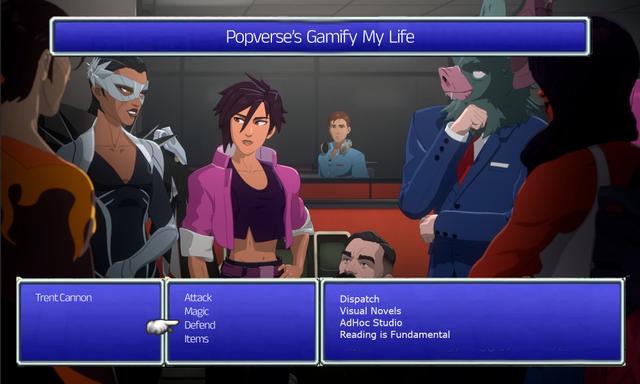If you click on a link and make a purchase we may receive a small commission. Read our editorial policy.
X-Men vs. Batman: How both animated series approached comic book storytelling in radically different ways
Neither is definitively right (but one is definitely better)

Popverse's top stories
- Critical Role Campaign 4 has "contingency episodes" in case the story goes long, says Marisha Ray
- Watch now: Watch as the Dan Da Dan cast - Abby Trott, A.J. Beckles, Aleks Le - creep out NYCC 2025
- Marvel's Avengers: Doomsday teaser is coming, but let's remember the lesson taught by the Avengers: Infinity War trailer
1992 was a good year for Western animation, particularly among young comic book fans, as it saw the debut of not one but two iconic superhero series. Batman: The Animated Series, which would spawn the highly regarded and influential DC Animated Universe, and X-Men: The Animated Series, which gave us one of the catchiest theme songs of all time, premiered within two months of each other on the same network. Despite their similarities, the two shows took drastically different approaches to their storytelling.

It is somewhat unfair to compare the two cartoons, simply because Batman was, in almost every way, a better show. It pushed the boundaries of American animation in its music, acting, writing, and animation. It gave us the most iconic portrayal of the Dark Knight and the Joker we’ve ever had outside the comics, and proved that cartoons could be more than simply vehicles to sell toys. It is rightly considered one of the best, most influential American animated shows of all time... and X-Men was always going to struggle to compete with that.

But there was a way that X-Men: The Animated Series was superior to its DC counterpart and that is in its groundbreaking approach to serialized storytelling and its earnest – if occasionally flawed – attempts to adapt some of the most iconic storylines in comic book history. The original run of episodes pulled directly from the X-Men’s extensive catalog of comic books, giving surprisingly faithful adaptations of storylines like The Dark Phoenix Saga, Age of Apocalypse, and Days of Future Past.
This was the first time that many of these storylines - which would go on to form the basis of multiple films once superhero films became in vogue - had been adapted for audiences, but it also marked a turning point in how American cartoons were written. Before X-Men, there was an unwritten rule in animation that characters must return to the status quo before the end of the episode. Multi-episode stories were rare and the kind of season-long arcs like we saw here were unheard of in animation. This was storytelling that assumed kids had an attention span longer than 22 minutes and could handle some actual peril in their shows. It wasn’t always smooth and it didn't always work, but it was a remarkable attempt for the era.

This attempt at long-form storytelling has continued in the X-Men ’97 revival on Disney+. The first two episodes establish an ongoing fight to legitimize both mutants in the public eye and for Magneto to carry on Charles Xavier’s legacy by leading the X-Men. Again, this is a story ripped from Uncanny X-Men #200, while the subplot of Storm losing her powers began in Uncanny X-Men #185 before running through the series for the next three years. Though both stories have been adapted to fit into the established continuity of the animated series’ world, they’re similar enough to their comic book counterparts to be instantly recognizable.
To its credit, Batman always made a point of disregarding established comic book continuity and rewriting it in new, often better ways. Heart of Ice, which rewrote Mr. Freeze’s origin story like his dying wife Nora, was so well-regarded that the comics adopted it and made it the established version of the character in nearly every continuity that followed. Harley Quinn was introduced as a throwaway character in an early episode before she would go on to be one of DC’s most loved female characters. Although Batman: The Animated Series would include characters and references to comic book canon, it reworked it to make it more fitting to the neo-noir world Bruce Timm and Paul Dini had established, giving the creators almost unparalleled freedom to reinvent the Caped Crusader.

Batman: The Animated Series is rightly regarded as the superior show, but that isn’t down to its particular approach to continuity. In fact, its insistence that everything returns to the status quo by the end of each episode would make it slightly less watchable for modern audiences, who have become accustomed to longer plots in the intervening years, if it weren’t for the fact that nearly every episode is so beautifully stylish and well animated. X-Men, despite its shortcomings in animation and music, arguably made for more ambitious storytelling, giving kids an introduction to the unwieldy and often contradictory world of comic book stories for the first time.
Neither approach is wrong and there is room in this world for both styles of adaptation. The fact that two shows from the same year and the same network differ so wildly in their production philosophy yet have become icons of animation is remarkable in its own right. The true separation between the two is that the industry has caught up with X-Men: The Animated Series. Longform plots and more faithful adaptations of comic books have become the norm and even the expectation for most animated shows. Even with Batman: Caped Crusader, a spiritual successor from Bruce Timm in the works, there are still few that can compare to the iconic style and beauty of Batman: The Animated Series.
Want to know what's coming up next in pop culture? Check out Popverse's guides to:
Follow Popverse for upcoming event coverage and news
Find out how we conduct our review by reading our review policy
Let Popverse be your tour guide through the wilderness of pop culture
Sign in and let us help you find your new favorite thing.















Comments
Want to join the discussion? Please activate your account first.
Visit Reedpop ID if you need to resend the confirmation email.